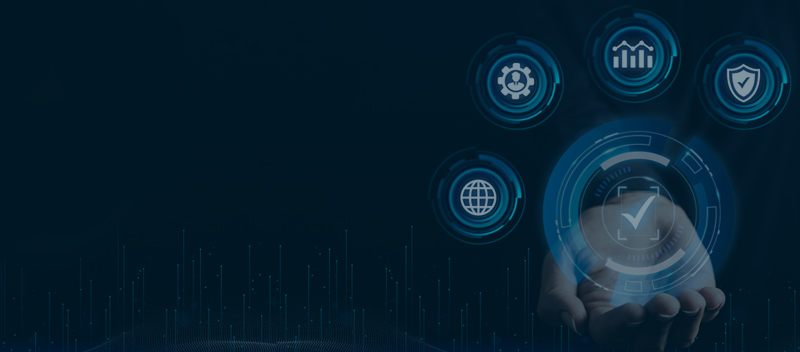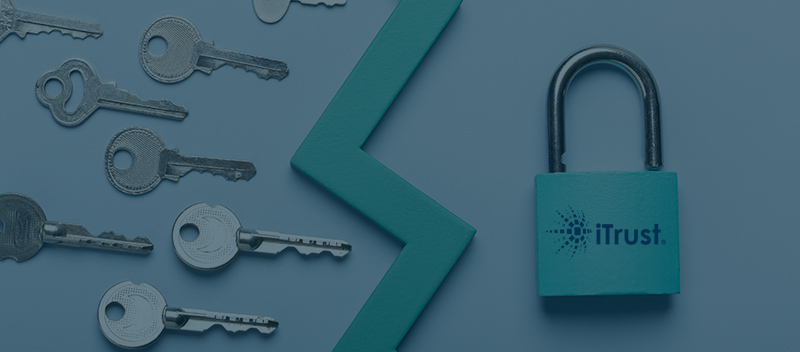Blog TrustNet: Your Catalyst for Healthcare SOC 2 Compliance
TrustNet: Your Catalyst for Healthcare SOC 2 Compliance

Information security is a critical aspect of any business, particularly the healthcare industry. With the constant flow of confidential patient information, it is crucial to have a secure data management system.
However, many businesses still need to pay more attention to the importance of SOC 2 compliance. SOC 2 compliance is auditing a business’s internal controls to ensure they meet industry standards for security, availability, integrity, privacy, and confidentiality.
Achieving SOC 2 compliance is no small feat, but it’s a journey worth embarking upon to safeguard patient data and instill trust. This is where TrustNet emerges as your catalyst for success. With years of experience in managed security and compliance, TrustNet brings a wealth of knowledge and expertise. We understand the intricacies of SOC 2 compliance and the specific requirements that healthcare organizations must meet.
Understanding SOC 2 Compliance
SOC stands for Service Organization Control. It is an auditing standard that was created by the American Institute of Certified Public Accountants (AICPA) to assess the security and privacy controls of service providers. SOC 2 compliance results from an independent audit that measures a company’s ability to protect its data and customer information.
The Five Trust Service Principles of SOC 2 Compliance:
1. Security: This principle ensures that the information and systems are protected against unauthorized access, unauthorized disclosure of information, and damage to systems that could compromise the availability, integrity, confidentiality, and privacy of information or systems and affect the entity’s availability to achieve its objectives.
Security refers to the protection of:
- Information during its collection or creation, use, processing, transmission, and storage;
- Systems that use electronic information to process, transmit or transfer, and store information to enable the entity to meet its objectives. Controls over security prevent or detect the breakdown and circumvention of segregation of duties, system failure, incorrect processing, theft or other unauthorized removal of information or system resources, misuse of software, and improper access to or use of, alteration, destruction, or disclosure of information.
2. Privacy: This principle ensures that the personal information of clients is collected, used, retained, disclosed, and disposed of to meet the entity’s objectives.
3. Availability: This principle assesses whether the system is available for operation and use as agreed upon.
4. Confidentiality: This principle measures whether the information designated as confidential is protected so it is not disclosed to unauthorized individuals.
5. Processing Integrity: This principle refers to the completeness, validity, accuracy, timeliness, and authorization of system processing.
SOC 2 compliance is essential if your healthcare business handles sensitive patient data. It ensures that your patients can trust that their data is protected, reliable, and safe from unauthorized access. Being compliant shows that your healthcare business takes data security seriously, positioning your organization as a trusted service provider.
Achieving SOC 2 compliance can give your healthcare business a competitive advantage over non-compliant competitors. It can help you win new business and retain existing clients.
SOC 2 compliance gives your business a thorough analysis of its data processing controls, security protocols, and privacy policies. It can show your clients that you are committed to storing and protecting their sensitive data professionally.
The Rising Threat of Cyber Attacks in the Healthcare Industry
The healthcare industry is a particularly attractive target for cyber criminals as it contains an abundance of sensitive and valuable data worth a significant amount on the black market. Medical records, social security numbers, and payment information are all examples of what healthcare providers work with daily.
Additionally, healthcare providers often have outdated or inadequate security measures in place, which creates a vulnerability in data storage, making it easier for unauthorized users to access protected data.
The potential impacts of a cyberattack on a healthcare provider can be ruinous. The most serious of all is the breach of patient data, compromising patients’ privacy and creating significant health and financial risks. Patient lawsuits can be expected to follow, resulting in grave consequences for any healthcare institution. In addition, a cyber attack can result in HIPAA fines, damage to corporate reputations, and costs associated with the recovery process from such an attack.
Over the past few years, there have been several high-profile examples of cyberattacks on healthcare organizations with serious repercussions:
In March 2020, the University Hospital Brno in the Czech Republic suffered a cyberattack that left the entire healthcare system paralyzed for several days. Also, in 2020, the healthcare sector saw a significant surge in such attacks. This includes the attack on Universal Health Services (UHS) that impacted 400 healthcare facilities.
Implementing robust security measures is vital in safeguarding patient data. Healthcare institutions must have adequate network security systems to detect and respond to unauthorized access.
Additionally, healthcare providers should use encryption technology, which makes valuable data useless to anyone who does not possess the necessary key to decrypt it.
TrustNet: Your Catalyst for Healthcare SOC 2 Compliance
SOC 2 reports are assessment procedures performed by a service auditor to evaluate an organization’s operational controls against selected Trust Services Criteria. These services can only be offered by a licensed firm such as TrustNet.
Gap Assessments: We assist your organization in evaluating its existing controls and reducing the risk of receiving a qualified opinion or reporting exceptions.
Type 1: This report provides an overview of the service organization’s control description and assesses if the design of these controls is suitable for achieving the related control objectives as of a specific date.
Type 2: This report offers an in-depth review of the service organization’s control description, evaluating both the design and operational effectiveness of the controls for achieving the related control objectives over a predetermined time period.
For more info on our SOC 2 reports, click here
The Roadmap to SOC 2 Compliance for Healthcare Businesses
1. Define Your Scope: Start by defining the scope of your SOC 2 examination. Identify which of the five trust principles (security, availability, processing integrity, confidentiality, and privacy) align with your goals. This decision streamlines the compliance process and saves time and costs.
2. Document Policies and Procedures: Document your security and compliance policies and procedures. These are the foundation for your internal audit controls, covering data classification, access control, encryption, and security monitoring. Auditors will assess these controls for compliance alignment.
3. Conduct Readiness Assessment: Before involving an independent auditor, perform a readiness assessment. This test ensures your existing setup complies with SOC 2 requirements, evaluating the functionality of internal audit controls and documentation and addressing potential non-compliance issues.
4. Engage with Independent Auditor: Partner with an independent auditing firm. Auditors will review your documentation and testing processes to assess SOC 2 compliance. They’ll issue a report indicating compliance status, highlighting areas of non-compliance if applicable.
5. Maintain Ongoing Compliance: SOC 2 compliance is an ongoing process. After certification, regularly assess internal controls and conduct periodic employee training on data protection practices to uphold SOC 2 compliance.
Benefits of TrustNet’s SOC 2 Compliance Solutions for Healthcare Businesses
TrustNet’s SOC 2 compliance solutions are the trusted path to success for healthcare businesses. With extensive experience serving clients globally, we offer well-rounded expertise in SOC 2 assessments.
Our SOC 2 solution consists of tools and services that simplify and automate achieving SOC 2 compliance. The solution offers guidance throughout the process, from the initial assessment to the final audit.
TrustNet’s SOC 2 compliance solutions benefit healthcare businesses in several ways. Firstly, TrustNet’s platform saves healthcare businesses time and money by automating many time-consuming tasks required for SOC 2 compliance.
Additionally, TrustNet’s SOC 2 compliance solutions adapt to evolving industry regulations. We also include a risk analysis framework that assesses current security practices. It also identifies potential risks and offers tailored remediation options to mitigate security risks.
Conclusion
By prioritizing SOC 2 compliance and utilizing the expertise and solutions of a trusted provider like TrustNet, healthcare businesses can build trust with clients and partners. They can also differentiate themselves in a competitive industry and maintain ongoing success in protecting valuable data.
Don’t wait – start prioritizing SOC 2 compliance today and experience
the many benefits that it can offer.




